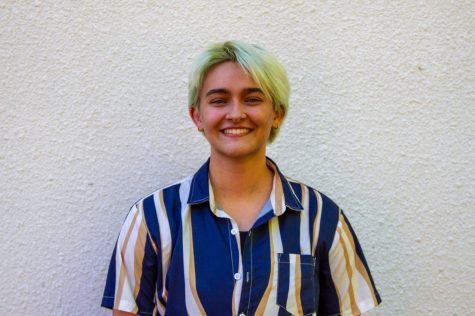UWEC’s Wide World of Sports
The Wizarding World of Harry Potter is part of the muggle world as well
More stories from Lauren Spierings
Photo by SUBMITTED
Despite rising to popularity as a fictional sport from the popular children’s book series “Harry Potter,” quidditch is actually a real sport played today.
Established as an official sport in 2005, quidditch is now played internationally in more than 40 countries. Teams are multi-gender, with the only requirement being that there are no more than four players of the same gender on the field at one time.
The Quidditch World Cup is also something from the books that has been brought into reality. The International Quidditch Association hosts a biennial tournament for countries to compete in.
On a smaller scale, the United States has over 150 teams that compete in a competitive league as well.
For the uninitiated, quidditch has a lot of rules that may be unfamiliar.
A quidditch team needs a minimum of seven players and can have 21 people in total. Since magic isn’t real, some modifications have been made to the rules so the sport can be played.
One of the main characteristics of quidditch from the books were the flying brooms players would sit upon. Professional players actually do still use broomsticks — these ones are plastic rods — which are held between the legs and must be held there during the entire match.
Quidditch has a number of positions relevant to the sport. In total, there are four types of positions, played by seven people at a time.
The chasers are the first position and are the players who score points. They are distinguished by the white headband they wear.
Chasers throw the quaffle into the hoops for points and there are three chasers on the pitch at once. Scoring through a hoop results in 10 points.
Beaters are somewhat like the defense of the team and wear a black headband. There are only two beaters on the field per team. Beaters throw bludgers at the other team to cause a “knockout,” which results in the knocked out player having to run back to their goalposts before returning to play.
Keepers guard the goalposts and wear a green headband. There is only one keeper on the field at once. The keeper is safe from bludgers while in the keeper zone.
The final position is the seeker, who wears a yellow headband. This player tries to capture the golden snitch off of the snitch runner, which results in 30 points and the match ending.
The quidditch pitch is not a typical sports field. The pitch is 33 meters by 60 meters and hosts a few differences from a football or soccer field.
The centerline is where the quaffle and bludgers — which are volleyballs and dodgeballs, respectively — are lined up at the beginning of the play period.
In addition, there are the keeper zones which house the goal hoops. The zone extends past the hoops an additional 19 meters.
The goal hoops are stood up vertically and are typically made of metal. The three hoops differ in height, reaching six, four and a half and three feet tall.
The snitch is another non-magic compromise, as the original snitch is a flying, gold ball the size of a walnut in the books. To fix this, the snitch runner was created.
The snitch runner is unaffiliated to the two playing teams. Their only goal is to stay away from the keepers as long as they can. To aid this, the snitch runners do not have to hold a broom as players do.
The snitch runners wear yellow shorts, which are attached to a sock. Inside the sock is a tennis ball, which is the snitch in this case. The goal of the seekers is to tackle the snitch runner and remove the sock from the shorts.
The IQA hosts both world cups and continental games for teams to participate in. The last World Cup — held in Florence, Italy — was won by Australia in the championship match against the United States.
The 2020 International Quidditch World Cup will be in Richmond, Virginia on July 18-19. More information can be found at iqasport.com.
Spierings can be reached at [email protected]

Timothy Spierings is a fourth-year Spanish and journalism student. This is their eighth semester on The Spectator staff. They enjoy trying all types of new foods and listening to new music artists and are currently trying to learn the bass guitar.

